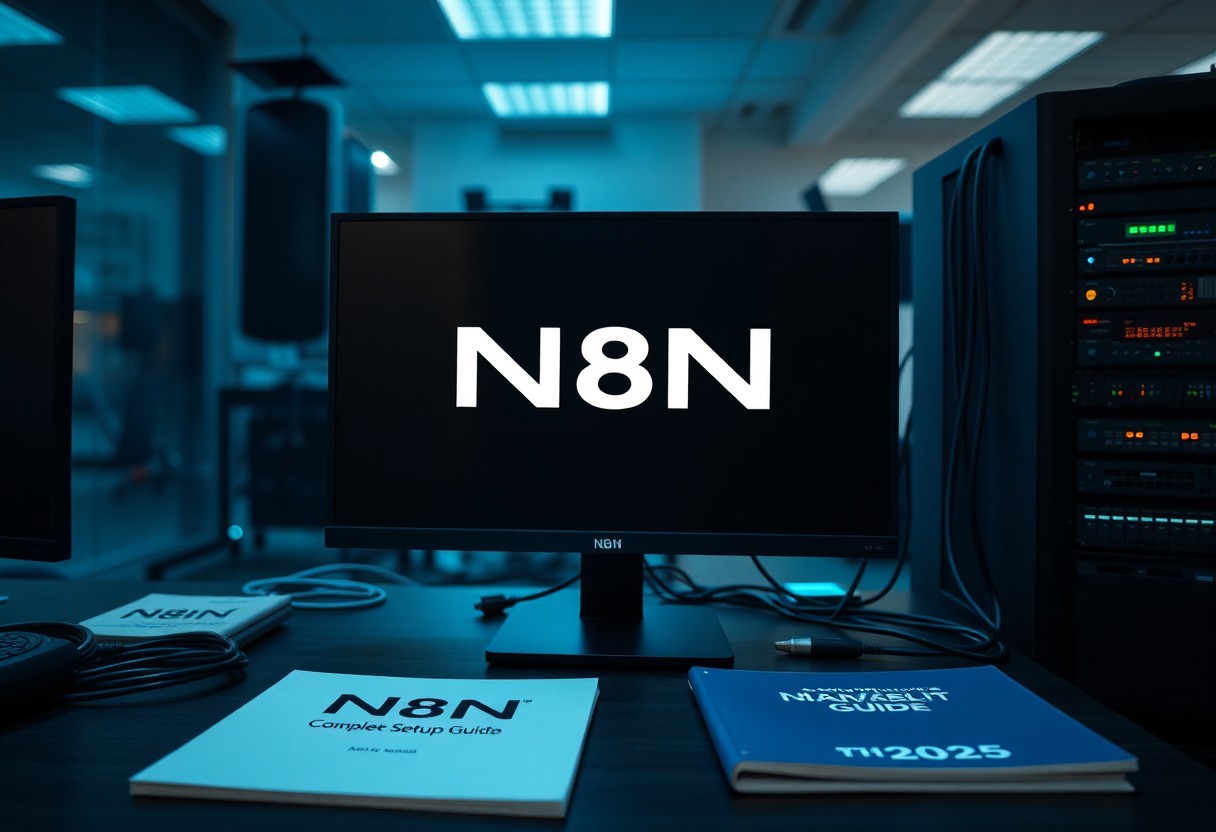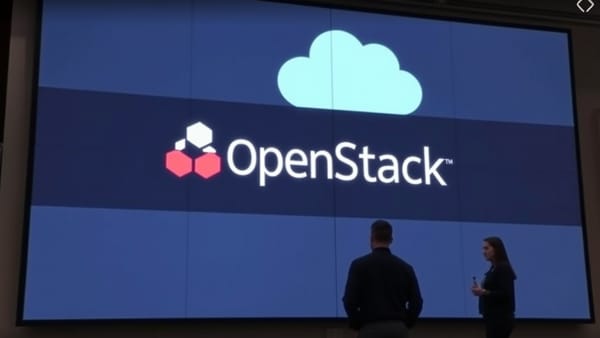Self-Hosted N8N: Complete Setup Guide 2025

N8N stands as your gateway to powerful workflow automation without the limitations of cloud-based solutions. As you examine self-hosting N8N, you'll discover complete control over your automation infrastructure while maintaining data privacy and reducing costs. This comprehensive guide will walk you through the entire setup process, from initial installation to advanced configurations, including N8N Google OAuth Setup (NEW 2025): Step-by-Step Guide. By following this guide, you'll have your own N8N instance up and running in no time.
Key Takeaways:
- N8N is a powerful workflow automation tool that can be installed on your own servers, giving you full control over data privacy and customization options
- Setting up self-hosted N8N requires basic understanding of command line interface, Docker, and server management for successful deployment
- The platform supports both webhook and database integrations, allowing seamless connections with various third-party services and internal systems
- Regular backups and monitoring of your self-hosted N8N instance are important for maintaining workflow reliability and preventing data loss
- Proper security configurations, including SSL certificates and authentication methods, must be implemented to protect your automation workflows
Scale Your n8n Workflows Without the Complexity
Stop wrestling with fragile automation and performance bottlenecks. Get enterprise-grade n8n infrastructure that runs 24/7, scales on demand, and never goes down—without the enterprise price tag or DevOps headaches.
Get Your Free Automation Audit⚡ Only 3 consultation spots left this week • No credit card required
Understanding Self-Hosted N8N
The self-hosted version of N8N puts you in complete control of your workflow automation environment. Unlike cloud-based solutions, running N8N on your infrastructure ensures data privacy, customization flexibility, and cost efficiency. For a detailed implementation guide, check out How to Self Host n8n | Osher Digital to get started with your setup.
What is Self-Hosted N8N?
While cloud solutions offer convenience, self-hosted N8N provides you with a powerful automation platform that runs entirely on your servers. This approach gives you full control over your data, security protocols, and system resources. You can customize the environment according to your specific needs, integrate with local systems, and maintain compliance with your organization's security policies.
Key Features of N8N
Features that make N8N stand out include its extensive integration capabilities and user-friendly interface. You'll find everything you need to create sophisticated automation workflows while maintaining complete control over your data and processes.
- Fair-code distributed software model
- Visual workflow builder with drag-and-drop interface
- Support for 200+ nodes and integrations
- Custom node creation capability
- Real-time workflow execution monitoring
- Webhook handling and API integration
- Role-based access control
- Version control for workflows
The extensive feature set of N8N empowers you to create complex automation workflows tailored to your specific needs. You'll benefit from its robust integration capabilities, sophisticated error handling, and comprehensive monitoring tools.
- Advanced error handling and retry mechanisms
- Conditional workflow execution
- Built-in debugging tools
- Data transformation capabilities
- Scalable architecture
- Regular backups and restoration
- Custom API endpoint creation
After exploring these features, you'll understand why self-hosted N8N is an excellent choice for your automation needs.

Types of Self-Hosted Environments
One of the most important decisions you'll make when setting up N8N is choosing your hosting environment. Your workflow automation needs will determine the best deployment method. Though each option offers unique advantages, understanding their differences will help you make an informed choice.
| Environment Type | Best Suited For |
|---|---|
| Local Installation | Development and Testing |
| Docker Container | Isolated Production Deployments |
| Cloud VPS | Scalable Production Workloads |
| Kubernetes | Enterprise-Level Operations |
| Bare Metal | Complete Infrastructure Control |
Local Installation
Environments on your personal computer provide the perfect starting point for learning N8N. You can experiment with workflows, test integrations, and develop your automation skills without any cloud costs. Your local setup allows for quick iterations and immediate feedback.
Cloud-Based Deployment
To scale your N8N operations effectively, cloud deployment offers the reliability and accessibility you need. Your workflows remain available 24/7, and you can manage them from anywhere.
Local development paired with cloud deployment gives you the best of both worlds. You can develop and test workflows locally before pushing them to your production environment, ensuring smooth operations and minimal downtime.
Step-by-Step Setup Guide
Despite its robust features, setting up N8N on your own server is a straightforward process that you can complete in under an hour. This guide breaks down the installation and configuration into manageable steps, ensuring you can deploy your automation workflow platform efficiently.
| Server Requirements | 2GB RAM, 2 CPU cores, 20GB storage |
| Estimated Time | 45-60 minutes |
Prerequisites
For a smooth N8N installation, you'll need a Linux-based server running Ubuntu 20.04 or later, Node.js 16+, and npm installed. Your server should have Docker and Docker Compose set up, along with a domain name pointing to your server's IP address.
Skip the Setup Nightmare.
Get n8n Deployed in 48 Hours.
Stop wrestling with Docker configurations, SSL certificates, and server headaches. Our experts deploy production-ready, self-hosted n8n infrastructure—optimized, secured, and ready to scale—while you focus on building workflows that actually matter.
One-time setup. Full control. Zero DevOps stress.
Installation Process
Guide yourself through the installation by first pulling the N8N Docker image and creating a docker-compose.yml file. You'll set up environment variables and configure your database connection settings.
Process involves running specific commands in your terminal to initialize the N8N container, set up SSL certificates through Let's Encrypt, and establish database connections. You'll follow a sequential approach to ensure each component is properly configured.
Configuration Steps
Installation continues with customizing your N8N instance by setting up authentication, configuring webhook endpoints, and establishing your initial workflow environment. You'll need to adjust security settings and set up your admin credentials.
Another necessary aspect involves fine-tuning your N8N deployment by configuring backup schedules, setting up monitoring, and establishing workflow execution limits. You'll want to customize these settings based on your specific automation needs.

Tips for an Effective Setup
All successful N8N installations rely on proper planning and execution. Consider these necessary elements for your setup:
- Regular database backups
- Monitoring system resources
- Setting up proper authentication
- Implementing SSL certificates
- Configuring automated updates
After establishing these foundations, you'll have a robust and reliable N8N environment.
Best Practices
Practices that enhance your N8N installation include maintaining detailed documentation of your workflows, implementing version control for your configurations, and establishing a testing environment. You should regularly review and optimize your workflows to ensure optimal performance. Setting up monitoring alerts helps you stay ahead of potential issues.
Common Pitfalls to Avoid
Any oversight in your N8N setup can lead to performance issues or security vulnerabilities. You should avoid running N8N as root, skipping regular updates, or neglecting proper error handling in your workflows. Pay special attention to rate limits and API quotas when integrating external services.
A well-maintained N8N instance requires your ongoing attention to security and performance. You'll need to monitor resource usage, manage API credentials properly, and maintain regular backups. Watch out for common issues like webhook timeouts, memory leaks from complex workflows, and insufficient error handling that could impact your automation reliability.
Factors to Consider Before Hosting
After deciding to self-host n8n, you'll need to evaluate several key elements to ensure a successful deployment. Consider your infrastructure capabilities, technical expertise, and resource availability.
- Server requirements and specifications
- Network bandwidth and stability
- Backup and disaster recovery plans
- Monitoring and maintenance capabilities
Though proper planning will help you avoid potential pitfalls and ensure smooth operation.
Performance Requirements
Even modest n8n workflows can demand significant resources as your automation tasks scale. You'll need to assess your expected workflow volume, concurrent executions, and data processing requirements. A minimum of 2GB RAM and 2 CPU cores will support basic operations, but you should plan for growth and peak usage periods.
Security Implications
Even basic n8n installations require careful security consideration to protect your automation workflows and sensitive data. You'll need to implement proper authentication, encrypt your connections, and regularly update your installation to patch vulnerabilities.
Performance and security go hand in hand when hosting n8n. You'll want to set up firewalls, implement SSL certificates, and establish access controls. Regular security audits of your workflows, API keys, and credentials storage will help maintain a secure environment. Consider using reverse proxies and VPNs for additional protection layers.
Pros and Cons of Self-Hosted N8N
Many organizations choose self-hosted N8N for its flexibility and control, but it's necessary to weigh both advantages and disadvantages before making your decision.
| Complete data control | Higher maintenance effortNo subscription fees | Technical expertise requiredCustom modifications | Security responsibilityUnlimited workflows | Infrastructure costsPrivacy compliance | Regular updates managementNo internet dependency | Backup managementPerformance control | Scaling complexityResource allocation | Time investment
Advantages
Assuming you have the technical resources, self-hosted N8N gives you complete control over your automation environment. You can customize every aspect of your setup, from server specifications to security protocols, ensuring your workflows run exactly as you need them.
Disadvantages
There's a significant learning curve and responsibility that comes with self-hosting N8N. You'll need to manage updates, security, backups, and troubleshooting on your own, which requires dedicated technical expertise and time.
Another consideration is the ongoing maintenance burden. You'll need to monitor system performance, handle scaling requirements, and ensure your infrastructure stays current with the latest security patches and N8N versions.
Final Words
Conclusively, your journey to self-hosting n8n can transform your automation capabilities while maintaining complete control over your data and workflows. By following this comprehensive guide, you've learned how to set up, secure, and maintain your n8n instance effectively. As you continue to explore and build powerful automations, you can always refer to the official n8n hosting resources for additional guidance and best practices. Your self-hosted n8n installation now serves as a foundation for creating sophisticated workflow automations tailored to your specific needs.
FAQ
Q: What is self-hosted N8N and why should I consider setting it up?
A: Self-hosted N8N is an open-source workflow automation platform that runs on your own infrastructure. By hosting N8N yourself, you maintain complete control over your data, can customize the environment, avoid subscription fees, and aren't limited by cloud-based restrictions. It's ideal for businesses requiring enhanced security and privacy.
Q: What are the system requirements for self-hosting N8N in 2025?
A: To run N8N smoothly, you need a server with minimum 2GB RAM, 2 CPU cores, 20GB storage space, Node.js version 16 or higher, and a Linux-based operating system (Ubuntu 20.04 or newer recommended). For production environments, 4GB RAM and 4 CPU cores are suggested for optimal performance.
Q: How do I backup my self-hosted N8N instance and workflows?
A: You can backup your N8N instance by creating regular exports of your workflows using the built-in export feature, backing up the database (SQLite or PostgreSQL), and saving your environment variables. Store these backups in a secure location and implement automated backup schedules using cron jobs or similar tools.
Q: Can I migrate my cloud-based N8N workflows to a self-hosted instance?
A: Yes, you can migrate your workflows from cloud to self-hosted N8N. Export your workflows from the cloud instance as JSON files, import them into your self-hosted instance, reconfigure your credentials and environment variables, and test each workflow to ensure proper functionality in the new environment.
Q: How do I keep my self-hosted N8N instance secure and up-to-date?
A: Maintain security by implementing SSL certificates, using strong passwords, enabling two-factor authentication, regularly updating N8N to the latest version, monitoring server logs, restricting access through firewalls, and following security best practices for your hosting environment. Regular security audits are recommended.



